Pernille Ripp's Blog, page 45
February 23, 2017
Problem Finders or Problem Solvers?
I try to be honest with myself, I feel like it is the only true way I can grow. After all, how can I expect my students to accurately reflect on how they are as 7th graders if I don’t reflect on how I am as a teacher?
Lately, I have been thinking a lot about assumptions. The assumptions I make about the choices my students make. The assumptions I make about what will happen if I try something. The assumptions I make about the actions of others and what they mean for me. We all know what they say about assumptions and I believe it. Assuming does not really get us further with anything, instead, it plants needless doubts, worries, and even conflict that isn’t really there.
Yet, the thing about assumptions is that they are safe. That when we assume, we don’t have to find out, we can just think we know and then adjust our course accordingly. We can continue with whatever we have determined is the truth and not really question it, not really question ourselves. Our assumptions can take us far if we let it. Yet, I wonder how often I have incorrectly adjusted my thinking, my doing, my plans because of something that wasn’t really true? How often I have traveled down a path that I found necessary based on things that were not accurate? How much energy have I wasted thinking about the versions of events that I think occurred?
So the very first we can do with assumptions is to realize we have them. To really questions ourselves, and not in a punitive way, but to check how much of what we think is based on truth or our perception of the truth. To seek solutions and answers rather than more problems. In fact as one of my smart colleagues said today, “We are always great at being problem finders, but what about being problem solvers?”
I want to be a problem solver.
So are your assumptions stopping you from moving forward? From positivity? From having better relationships with your colleagues, with your students? In fact, I bet if you think about it, a situation probably will come to mind where assumptions you had did more damage than good. I know mine have, I cannot be alone in this, but that also means there is hope, and in hope, there is always a way to move forward.
If you like what you read here, consider reading any of my books; the newest called Reimagining Literacy Through Global Collaboration, a how-to guide for those who would like infuse global collaboration into their curriculum, was just released. If you are looking for solutions and ideas for how to re-engage all of your students consider reading my very first book Passionate Learners – How to Engage and Empower Your Students. I am currently working on a new literacy book, called Passionate Readers and it will be published in the summer of 2017 by Routledge. I also have a new book coming out December, 2017 . Also, if you are wondering where I will be in the coming year or would like to have me speak, please see this page.
Filed under: assumptions, Be the change, being a teacher


February 18, 2017
Some Favorite New Chapter Books, Part 1 2017
If my early reading of 2017 is any indication, this year is shaping up to be a powerhouse of a year in children’s literature. And for that I am excited. So what are some of the great books I have read, loved, and now am sharing?
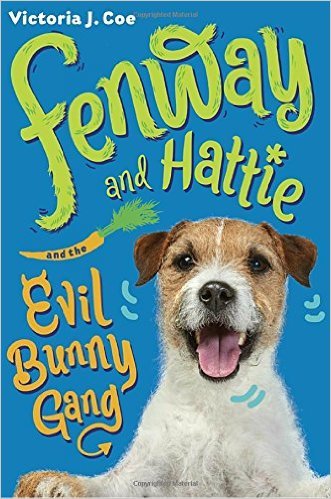
Fenway and Hattie and the Evil Bunny Gang by Victoria J. Coe
If you have been within a mile of me and asked for a book recommendation for younger classrooms (1st grade and up you will have heard me mention Fenway and Hattie by Victoria J. Coe. After all, this new series written from the perspective of a dog captured my heart last summer and is now a GRA contender. So I am delighted to add the second book in the series as another must read. How can you not love the adventures of Fenway as he tries to navigate the very confusing life of being a dog?
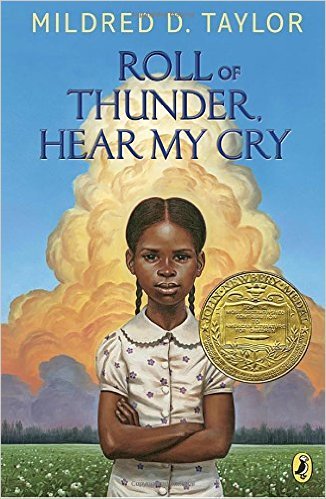
Roll of Thunder, Hear My Cry by Mildred D. Taylor
Yes, I am aware that this book was originally released in 1976 and subsequently won the Newbery. It is by no stretch of the imagination a “new” book, but it was for me. As part of our reading identity challenge, I wanted to close some of my classic American children’s literature gaps (growing up in Denmark, there are just some books I have never read), and so I chose this amazing book. I am glad I did.
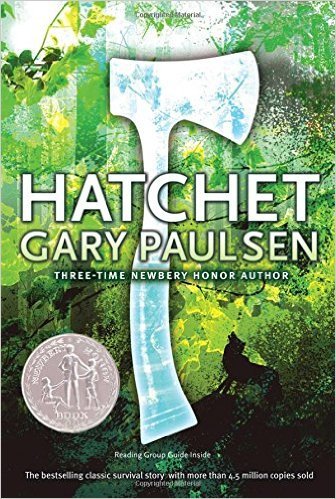
I may be the only teacher left that had never read Hatchet before, at least that is what it felt like. I now get why it continues to pop up in contemporary classrooms as a must read book. I was hooked once that plane went down.
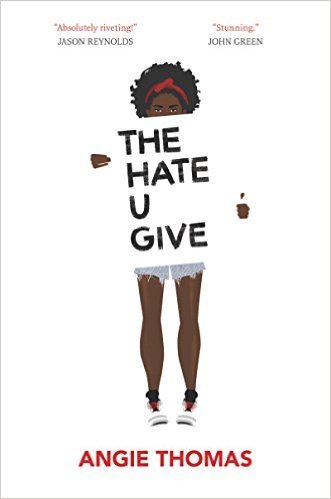
In my opinion, right now there are three must-read YA books this spring; Piecing Me Together by Renee Watson, American Street by Ibi Zoboi, and The Hate U Give by Angie Thomas. All desperately needed in our classrooms but not just to be read by students, no, these also need to be read by us adults. And then we need to sit with them for a long time and take a long hard look at ourselves and see where we need to start our work with checking our privilege and our bias.
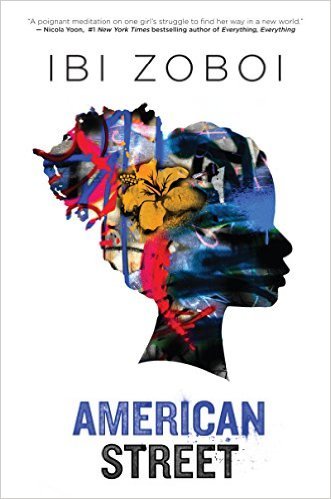
As mentioned above, American Street by Ibi Zoboi is another must read. As an immigrant, I related to it, but as someone who is viewed as another white American (even though I am Danish), it was an education. Raw, poetic, and sure to make you think, this needs to be in our 8th grade and up libraries.
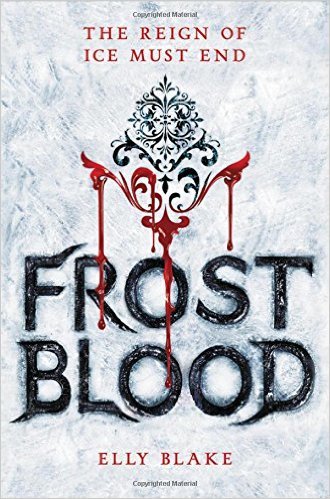
I am a sucker for fantasy series that pits good against evil. Throw in a slight romance and I am hooked. I loved the concept of Frostblood (The Frostblood Saga) by Elly Blake, and while there certainly were similarities between this and other books in this type of vein, it didn’t matter. It was a great read; entertaining and worth my time. I cannot wait for the next book in this YA series.
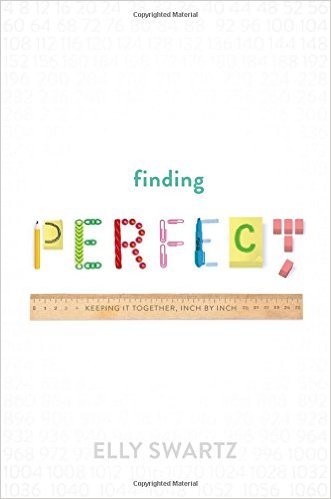
It is not often that a middle-grade novel about a girl who suffers from OCD is this well-written. I simply loved Finding Perfect by Elly Swartz for its lack of sugarcoating, for its brutal portrayal of a girl who realizes what she is doing is not normal and yet cannot stop herself, for the story. OCD is sometimes portrayed almost as a gimmick, but not in this book. It was heartwrenching to say the least and written in a way to bring all readers in.
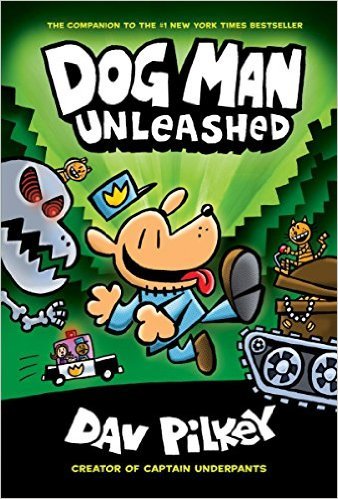
In my book, Dav Pilkey can do no wrong. His genius is one that ensures that so many kids see themselves as readers and I will never be able to personally thank him enough for his dedication to creating amazing books. So Dog Man Unleashed (Dog Man #2) was a natural read for me. I laughed out loud, I did the flip-o-ramas and then I book talked it to my 7th graders. I have not seen the book since. This addition to this list also shows me how randomly I read at times, which I totally love.
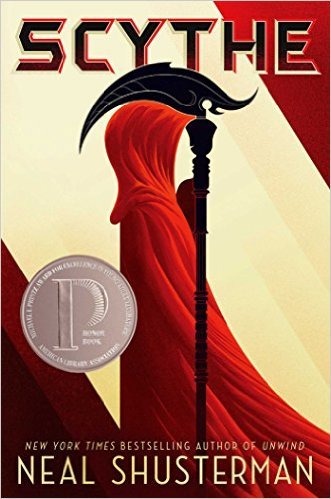
I read Scythe (Arc of a Scythe) by Neal Shusterman in two nights and then handed it to one of my students. A week later she handed it back and said, “This is the best book I have read all year.” Enough said, this is PG13, but a must add and read.
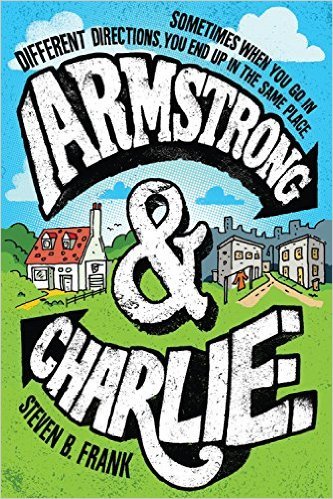
I grabbed Armstrong and Charlie by Steven B. Frank from my ARC book pile on a whim. Two hours later I finally looked up and realized that I was not supposed to be sitting in my chair still reading. I love this middle-grade novel for all of its nuances when it comes to sharing the story of one school’s integration in the 1970’s and so will you. I also hvae two different students reading it right now and they agree; this book is a must add to 4th grade and up.
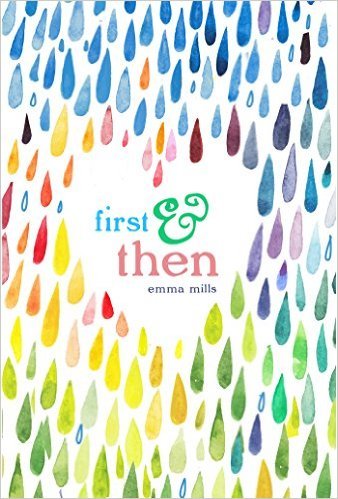
Yes please to a YA book where the female lead character doesn’t need to be saved, isn’t waiting to be changed by the boy she falls in love with, has a family that actually is functional, and is also not a hopeless mess. I am a fan of First & Then by Emma Mills .
So there you have it, a small slice of my reading life from the past 7 weeks. To see more up-to-date shares of what I read follow me on Instagram. And to see all of the lists I have created through the last three years or so of favorite books, go here.
If you like what you read here, consider reading any of my books; the newest called Reimagining Literacy Through Global Collaboration, a how-to guide for those who would like infuse global collaboration into their curriculum, was just released. If you are looking for solutions and ideas for how to re-engage all of your students consider reading my very first book Passionate Learners – How to Engage and Empower Your Students. I am currently working on a new literacy book, called Passionate Readers and it will be published in the summer of 2017 by Routledge. I also have a new book coming out December, 2017 . Also, if you are wondering where I will be in the coming year or would like to have me speak, please see this page.
Filed under: being a teacher, books, Literacy, Reading


The Ideal Class – Perhaps You Already Have It?
I left school yesterday with a smile. It had been a busy day – when is it not – and yet the energy in almost all of my classes was infectious. The sun was shining, it was Friday, and while the kids certainly were ready to learn, they were also ready to use their energy and channel most of into class. As I taught my classes how to infer deeper, I laughed along with them, asked them to hush when needed, to focus back in, but otherwise loved the conversations that seemed to happen. They were not all on topic, but they were together, and they were learning and they left English with a smile.
A great colleague of mine asked me yesterday what my ideal classroom would be like and I couldn’t help but think that after a day like yesterday; that was my ideal. For kids to be engaged with whatever we were doing, to be talking, to be sharing, to be laughing. While they certainly had their moments where I had to wait for them to focus back in, while some kids still chose to remain quiet, while some kids probably still didn’t get as much out of it as I could hope for, most of them did. And that’s it for me; when most of my students are engaged, when most of my students are discussing, working, and being a part of whatever it is we are doing; then I am in my ideal classroom, and it turns out, I already have that.
Of course I will continue to shoot for all. For every child to share, for every child to participate, for every child to be on task and engaged in work, but right now, after yesterday, I realized that what we have works. At least for me. At least for almost all of the kids.
Too often I beat myself up when not every child is engaged. When not every child likes what we are doing. Too often I feel like I am not a great teacher because I focus in on that child that is not doing what they should be doing, rather than focusing in on all of the ones that are. It is exhausting to think like this and doesn’t make my teaching better; I simply can’t be a great teacher when I only focus on what doesn’t work. I can’t be a happy person when I only see all of the things that are still not in place.
So as prepare for Monday’s work, I will make a reminder to myself as well; my ideal classroom is one of smiles, of happy, of engagement, whether it is reading quietly or being loud. My ideal classroom is one where students feel safe, feel accepted, feel like they can let loose a little and still be welcomed in. Not one of silent and compliant, not one of focusing only on me. And I have that already, now it is up to me to remember. So what is your ideal classroom? Are you already teaching in it?
If you like what you read here, consider reading any of my books; the newest called Reimagining Literacy Through Global Collaboration, a how-to guide for those who would like infuse global collaboration into their curriculum, was just released. If you are looking for solutions and ideas for how to re-engage all of your students consider reading my very first book Passionate Learners – How to Engage and Empower Your Students. I am currently working on a new literacy book, called Passionate Readers and it will be published in the summer of 2017 by Routledge. I also have a new book coming out December, 2017 . Also, if you are wondering where I will be in the coming year or would like to have me speak, please see this page.
Filed under: being a teacher


February 16, 2017
A Few Ideas to Teach Inference
My students have been discussing theme and how to analyze for it seemingly all year. I have seen their growth, I have seen their understanding as they feel like they are mastering tough concepts. I tell them that analyzing text is really just practice for being better human beings, for being able to read verbal and nonverbal cues in any given social situation and being able to navigate it successfully. I am not sure they fully believe me, not yet anyway, but in order to help them understand that these skills are really human skills and not just something an English teacher wants them to do, our focus is shifting back to inference. That skill that we have been teaching for years, that skill our students have been exploring for years. I needed new ideas and here is what I came up with.
Using wordless picture books
I need my students to fully believe that you can read situations and text in many different ways and that how you understand something sometimes depends on the very lens you come with. Wordless picture books put us all on an equal playing field, students are not tying their understanding into direct language decoding, but instead reading the pictures and filling in the gaps. I love to see how different their ideas can be based on their background.
Using America’s Funniest Videos
Students, at times, forget how much inferring they already do throughout a day. So I played a few clips from America’s Funniest Videos and stopped them before the “fail” happened. Students used background knowledge, as well as reading the evidence in the video to try to guess what would happen. We only watched about two minutes but it was hilarious and worth it.
Using “Whodunits”
I love a good “whodunit” story and gave groups of students the same story today to solve. Could they figure out who the murderer and more importantly, back it up with the correct evidence? I loved the way students dissected the text, tried on possible solutions, and then attempted to solve the mystery.
Using half a story, at first.
I love a great story with a twist and was delighted to be handed a great short story about a vampire today from one of my amazing co-teachers. I plan on giving students the beginning half of the story and have them do a characterization of the main character together. Then they will get the second half of the story which reveals that the main character is a vampire, clues were strewn throughout the first half, and we will now go back to find them. This is a great lesson for kids to truly understand; sometimes we don’t know what we have missed until we have gone all the way through the text and then start over.
Asking them what happened.
Another great way to use stories with a twist is to ask them what actually happened, especially when the story is rather ambiguous. I like when students have to wrestle with a text for awhile and can land on opposite sides and still both be right. A story I have enjoyed using for this is the story My Dog by Kevin ONeall.
Using music videos without the sound.
Something we will be trying tomorrow is looking at music videos, I will be using ones from the 80’s, but without the sound playing. I will play a minute or so of the video and see if they can figure out what type of song it is and what the lyrics might be about. We shall see if they can come even close. A fun one to use will be Meatloaf’s I Would Do Anything for Love or Bjork Human Behavior.
If you like what you read here, consider reading any of my books; the newest called Reimagining Literacy Through Global Collaboration, a how-to guide for those who would like infuse global collaboration into their curriculum, was just released. If you are looking for solutions and ideas for how to re-engage all of your students consider reading my very first book Passionate Learners – How to Engage and Empower Your Students. I am currently working on a new literacy book, called Passionate Readers and it will be published in the summer of 2017 by Routledge. I also have a new book coming out December, 2017 . Also, if you are wondering where I will be in the coming year or would like to have me speak, please see this page.
Filed under: being a teacher, writing


February 12, 2017
When They Still Just Hate to Write…
Our son Oskar hates writing, truly hates everything about it. From the holding of the pencil, to the forming of the letter, to the message itself; there is no love lost here. Last week he was asked by his school to write his name on all twenty Valentine’s day cards he will be handing out to his friend. For a week this has been the ongoing conversation…
“Mom, this is like 100 cards, did you really count them?”
“Mom, I only have five friends, so I really only need to write five…”
“Mom, my friends know that I have a “K” in my name so I don’t need to write these letters…”
“Mom, I want to be a job that has no writing in it…”
Oskar is four years old. I am truly not worried, not yet, after all, he is at the beginning of his writing journey. Holding a pencil is hard work. Forming letters that others can read is hard work. Sticking with something more than five minutes is hard work. Yet…
I see his words echoed by some of my students, my twelve and thirteen-year-olds. Not just the boys, the girls too. We hate writing, writing is hard, please don’t make us write. And they don’t, they fight me every step of the way. They write something once and then never return to it. They do not care that it doesn’t make sense, they do not care that words are misspelled, they do not care that their writing is sometimes terrifyingly simple. There is no love for the fine art of writing because as they tell me, they will never be writers when they grow up. So I wonder, what can we do to protect the love of writing and are we doing enough? Are we offering students a chance to feel like writers rather than see it as something to just get through?
And I get it; how many adults identify as writers? How many adults feel like they know how to write well? How many teachers see themselves as writers who would quickly identify as readers? Why is it that this incredible method of communication seems to have had all of the joy sucked right out of it? So I wonder, what can we do to protect the love of writing and are we doing enough? Are we offering students a chance to feel like writers rather than see it as something to just get through?
I know we preach about free choice in writing as if this simple change will fix anything, yet even when given free choice I have students who prefer not to. Who would like the choice to be that they do not have to write. So what else can we do beyond giving them time? Giving them freedom?
We can speak to authors.
Through Skype we have had wonderful conversations with authors who have told us all about their writing process. Not only has this given the students a deeper connection with the very books they read, but it has also given them a chance to realize that not every writer felt like a writer as a child. That not every writer gets great ideas with no work behind them. That writing is hard work and something that even those who have gotten a book published say they get frustrated by it. This opportunity to speak to those who make it seem so easy has cemented lessons that I have tried to teach for years; writing is hard work, writing does not always come easy, and it is okay to doubt yourself as long as you don’t give up.
We can find out why.
I used to assume that I knew why my students didn’t like to write, after all, it seemed to almost always be the same reasons. I stopped assuming several years ago when a child told me they hated to write because they did not want a peer to edit it. They had not written a single word yet. So now I ask, and we should all ask; what about it do you not like? When did you start not liking it? What has helped? What has hurt? What small steps can we do to make it better if even just a little bit? Sometimes they don’t know, other times they do, but we don’t assume to know the answer, so we always ask.
We can sit in silence.
Too often we assume writing must commence the moment an assignment is given and yet those of us who do write regularly know how much writing happens before we actually write any sentences. I need silence to write. I need inspiration. I need to find something that is worth writing about. This is where free choice is so powerful in our writing curriculum, but so is wait-time, quiet, and a way to manipulate the learning environment to work for the individual. My students know that when they write they are expected to make the room work for them, not the other way around, so they do. And they sometimes stare into space for a really long time, but almost always, they finally start to write. And those that don’t? Well, they are a conversation waiting to happen.
We can provide self-chosen support.
I used to partner students up by need, by whatever skill they needed to work on. Now I ask my students to please find a partner or two to work with as they process through their writing, rather than artificially pair them up. Why? Because sharing your writing is a vulnerable process. Sharing your writing and asking someone for feedback can make or break future writing. Because when I write I self-select those that will see my unfinished work so that I know that they are judging the work and not me.
We can give breaks.
Writing is hard work. Even as 7th graders, some of my students do not have the stamina to do writing well for more than fifteen minutes. That is ok, as long as we are aware of it. For my most ardent non-writers we try to give breaks, sometimes through conferencing, but others time just a movement or water break, so they can shake their hands, clear their minds, and recapture the energy they were feeling before.
We can be honest.
I speak about my own writing process with my students as we explore our writing lives. I speak of the frustration, of how hard it can be to receive criticism, of how I get in writing slumps, how I seek out inspiration. I tell them that there are millions of ways to write, that none of them are perfect, but that what matters is that they find their own path. That they experiment, that they explore, that they do not give up even when they are certain that writing will never be anything they actually will need for anything. I ask for their concerns and complaints, they share their needs so that I can try to adapt the writing curriculum to fit their needs.
We can make it matter.
My students rarely write in isolation. Their bigger projects almost always extend beyond the classroom to make a difference in the lives of others. To make a mark in the world around them. Sharing our writing globally has helped some students realize the direct impact that their words can have on others. Giving them tools such as blogging or simply sharing through Google docs, have made them realize that what they write can matter to others beyond our classroom walls. That their opinion may shape the opinion of someone else. That what they write may provoke an emotion in others. It is not the ultimate solution, there are still children who fight me, who fight themselves, every step of the way. But it’s a start. It is a way to try to make writing seen as something important, rather than just something we do in school, never to be applied to the real world.
When Oskar finished his twenty Valentine’s Day cards tonight, they were a bit of a mess. The “O’s” looked pretty good but everything else was illegible. He had a smile on his face and so we gathered them up and put them in his backpack. We have a long way ahead of us yet for him to like writing more. We picked our battle tonight, knowing that if we had asked him to re-do them all, the damage to his already strained relationship with writing would have been significant. Perhaps this is my last advice for tonight then, spoken more to myself than others; one battle at a time. One hurdle at a time. Small successes matter, even if we haven’t completely changed a child’s mind just yet. As they say in Denmark; mange bække små gør en stor å.”
If you like what you read here, consider reading any of my books; the newest called Reimagining Literacy Through Global Collaboration, a how-to guide for those who would like infuse global collaboration into their curriculum, was just released. If you are looking for solutions and ideas for how to re-engage all of your students consider reading my very first book Passionate Learners – How to Engage and Empower Your Students. I am currently working on a new literacy book, called Passionate Readers and it will be published in the summer of 2017 by Routledge. I also have a new book coming out December, 2017 . Also, if you are wondering where I will be in the coming year or would like to have me speak, please see this page.
Filed under: Be the change, being a teacher, student choice, Student dreams, Student Engagement, writing


February 8, 2017
Silent and Compliant
I was born to speak up or so it seems. My mother taught us all the value of our words and of our spine. I am sure she regretted it at times as we would battle fiercely as children when we felt wronged by our siblings. She taught us to speak up, but do so kindly. To stand our ground but not lose sight. To question but not in a spiteful way. To not settle, but to fight when needed, and not just fight for ourselves, but for others who needed our help.
Yet, when I became a teacher, it seems I forgot all of those lessons. I did not teach my students to question. I did not ask them to speak up. I did not ask them what they stood for because that was not in my lesson plan. We had science, math, reading, and writing to do. Figuring out who they were and what they needed was not in my standards. Thus it it was not my job to teach kids to be empowered. To empower others. To fight for change.
Instead my job, it seemed, was to make them silent and compliant. Silent when they do their work. Silent when the teacher speaks. Silent in the hallways, thanks PBIS, whisper voices in the lunch room. Don’t raise your voice unless you are outside. Don’t raise your voice even when wronged. Don’t raise your voice…
Do as I say and do it now. Do as I say and do not ask why. Do as I say and not as I do, because I am the adult in the room, and my rules only apply to you. The better you were at being silent and compliant, the nicer of a kid we thought you were. There goes someone who knows what it means to go to school. There goes someone who we can be proud of.
I once had a child ask me straight up why they should do something. The first time it happened, I was shocked at the audacity. How dare they question my directions? The second time it happened I brushed it off, and yet, as kids will be kids, there were always those kids who questioned. Why is this important? Why do we do it this way? Why do I have to do this? It wasn’t until I realized just what silent and compliant would do to my own ferocious daughter, a two year old at the time who never sat still it seemed, that I realized the damage I was doing. That I realized that I had forgotten the lessons my mother had taught me. That I was complicit in creating a populace that would be afraid to question authority. That I would help create a polucae that does not seek answers on their own. That we would look at all of the fake news and wonder why we are all falling for it?
So now I ask for silence so they can think. I ask for silence when they read, or whisper voices if they need to share during that time. But when we learn, I ask for them to question, I ask for them to discuss, to share their thoughts, to not just listen but to think. To seek out knowledge beyond what I present. To find an opinion, to fight for an opinion. To find out what matters and stand up for it. To create a cacophony of noise as they learn so they can process the information better. There is still silence in our classroom when needed, but it is a privilege afforded to all who request it, it is used with purpose and not for control.
I ask them to follow directions yes, we all do, but I also tell them why. I ask them to tell me how they can learn better so we can create a better classroom experience. I earn their respect rather than demand it and for some that takes a long time.
Yes, we need kids that will follow directions, that know when to be quiet in our schools. But we must not forget that that was never the point of an education. That creating robots, afraid to speak up, who follow every direction blindly is one of the last things we should be striving for. Because those robots grow up and their silence grows with them. We can look to our history books to see what happens when adults stop speaking up and speaking out.
So do not lose your vision for what the future should look like for the kids you teach. I wish I hadn’t. I wish I would have embraced the questions rather than silenced them. I wish I would have had the courage to have them question me so that i could realize why I did the things I did, rather than just follow the program.
I teach my own children to speak up, to stand up, to do so with kindness, but to stand firm when they believe in their own convictions. They fight my husband and I, of course, but we also smile on the inside because we know that when they are older, when they must stand by themselves, they will continue to question, to advocate, and to not be afraid to demand action. So I teach my students to speak up as well. To do so with kindness, but to stand tall. Our schools should be filled with voices, and not just those of teachers, is yours?
If you like what you read here, consider reading any of my books; the newest called Reimagining Literacy Through Global Collaboration, a how-to guide for those who would like infuse global collaboration into their curriculum, was just released. If you are looking for solutions and ideas for how to re-engage all of your students consider reading my very first book Passionate Learners – How to Engage and Empower Your Students. I am currently working on a new literacy book, called Passionate Readers and it will be published in the summer of 2017 by Routledge. I also have a new book coming out December, 2017 . Also, if you are wondering where I will be in the coming year or would like to have me speak, please see this page.
If you like what you read here, consider reading any of my books; the newest called Reimagining Literacy Through Global Collaboration, a how-to guide for those who would like infuse global collaboration into their curriculum, was just released. If you are looking for solutions and ideas for how to re-engage all of your students consider reading my very first book Passionate Learners – How to Engage and Empower Your Students. I am currently working on a new literacy book, called Passionate Readers and it will be published in the summer of 2017 by Routledge. I also have a new book coming out December, 2017 . Also, if you are wondering where I will be in the coming year or would like to have me speak, please see this page.
Filed under: Be the change, being a teacher, Student dreams, student voice


February 6, 2017
They Are Fun
“What a great group of kids…” She tells me as she turns toward the door. “Thank you for having me, they are fun.”
I nod, smile, go through the motions of the compliment, and yet it is not until the quiet settles in that I truly realize the power of her words.
I teach a great group of students. I tell them that often. I teach a group of students who have a lot of energy, who demand a lot, who complain at times and when they do they do so loudly. I teach a group of kids who are not engaged easily, who sometimes are unkind, to each other, to me. Who sometimes speak before they think. I teach a group of kids who are always pushing me to grow, who are always pushing me to reflect, who sometimes make me feel like today I figured “it” out and other days like I am so far from the answer. They are loud, they are rambunctious, and yes, they are fun.
And sometimes I forget that. Sometimes I forget that teaching 7th graders doesn’t just mean teaching English. Doesn’t mean just teaching reading, or writing, or speaking, or anything else academically we can squeeze into our short 45 minutes together. That I teach kids who make me laugh, who make me want to come back every day, even when I think that today they could have worked harder, been less disruptive, and perhaps focused a little bit more.
When we bring others in, we are reminded that it is not just us they look at. Not just our performance as we try to figure out how to be better teachers. They also look at our children, the very kids we get to teach day in and day out. They do not just see all of the little perceived imperfections that we have noticed as we have studied these students for months. They do not just see that one kid that knows better. Just that one kid that should be doing something else. They see all of them; their energy, their engagement, and yes, even how fun they are.
Today I was reminded again of why I love teaching so much, not that I had forgotten, but still… How we are meant to explore. How we are meant to change the lesson to discuss something that just came up. How we are meant to adapt as we go, mold and shape it around the very kids that have entered into our rooms. That teaching, that learning, that being together in a classroom environment is meant to be an exploration, not just a sit-and-get, not just a silent-and-compliant. So if you feel yourself focusing in on all of the things that still need to get fixed. If you feel yourself getting wound up or brought down. If you feel yourself drained from noticing all of the things that still don’t work; invite someone in to see you teach. Invite someone in who doesn’t get to be around your kids. Invite someone in not just so you can grow but so that you can remember; they are kids, they are loud, but they are also what brings us back every single day. Thank you Andrea for reminding me today.
Filed under: Be the change, being a teacher


February 4, 2017
Some Favorite New Picture Books – Part 1, 2017
As I have been busy sharing favorite books on my Instagram account, I realize that I have not shared many new finds on here. This quiet Saturday morning, where I am up much too early thanks to my kids, is therefore the perfect day to catch up. So grab a cup of tea or coffee, make your list, borrow from your library or add them to your classroom, I promise you won’t regret it.
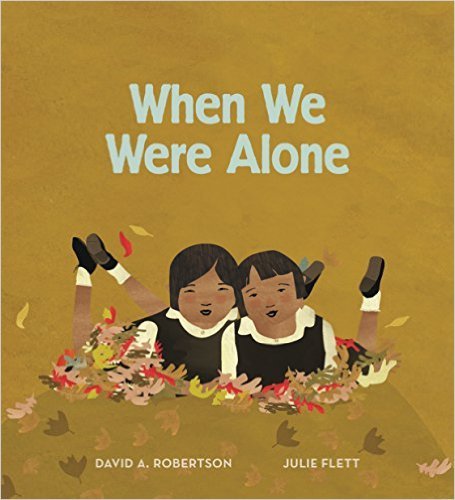
by David Alexander Robertson (Author), Julie Flett (Illustrator)
This picture book with its grounded illustrations really hits an emotional punch. This led us into a discussion of the forced relocation of Native children into boarding schools, a topic that many students are unaware of. It also sparked conversations about identity and self-preservation. Fantastic for teaching memory moments or flashbacks for Ntotice and Note, however, my four year olds at home also loved it.
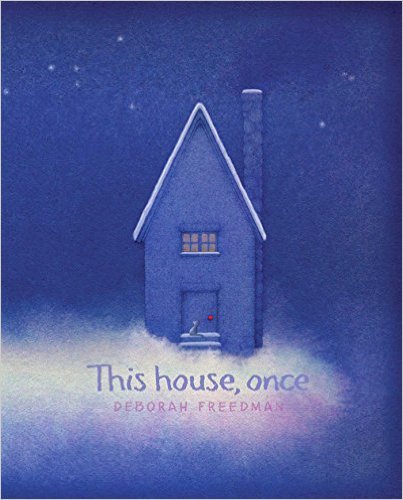
This House, Once Hardcover by Deborah Freedman (Author, Illustrator)
Deborah Freedman has been on my list of amazing authors and overall human being for awhile now. Het latest picture book is simply breathtaking. Telling the story of a house and the parts it is made up of, it made me think of how speak to our children about the birth of ideas and how it takes many different parts to make something beautiful. What a beautiful message for us all right now. This released February 28th.
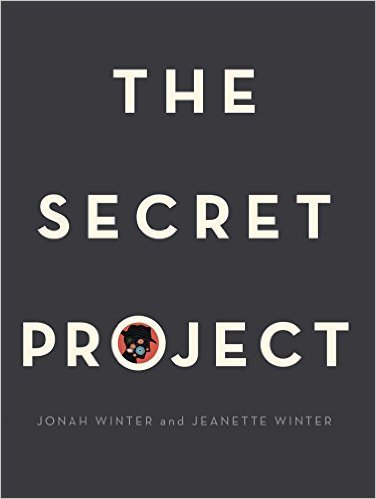
The Secret Project Hardcover by Jonah Winter (Author), Jeanette Winter (Illustrator)
I was unsure about a picture book that tells the story of the Manhattan Project, the creation of the atomic bomb, and yet the beauty of this book is exactly in how hard of a topic this is. Powerful and moving with an author’s note that is sure to generate discussion, what a book this is.
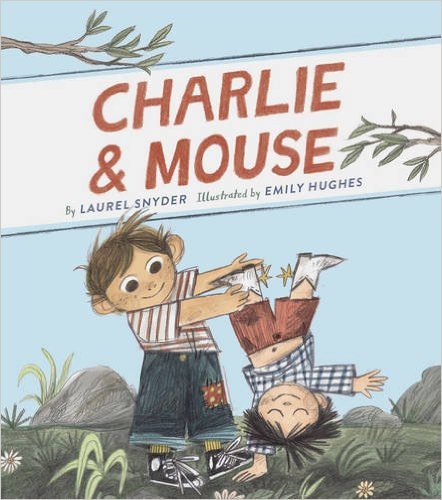
Charlie & Mouse by Laurel Snyder (Author), Emily Hughes (Illustrator)
While technically not a picture book but rather an early reader, we are obsessed with Charlie & Mouse in our household. This brand new series from Laurel Snyder is laugh out loud funny and a must for anyone with younger children. My eight year old loves it as well and reads it on her own. This first book in a new series comes out in April, it is definitely worth the wait.
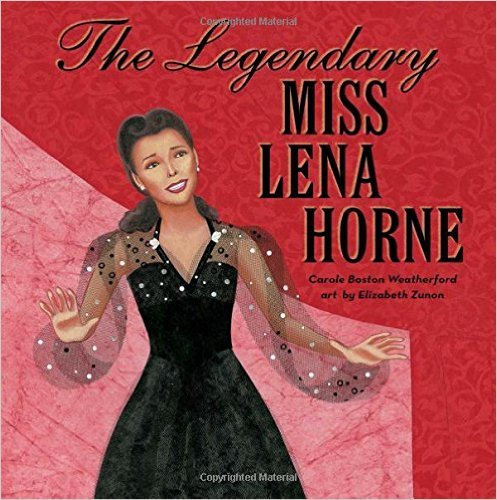
The Legendary Miss Lena Horne Hardcover by Carole Boston Weatherford (Author), Elizabeth Zunon (Illustrator)
I had certainly heard of Lena Horne, however, I honestly knew very little about her. This picture book has set me straight; her inspiring life not only as an entertainer, but also a civil rights activist is one every child should know of.
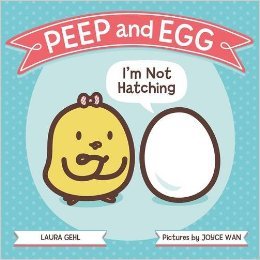
Peep and Egg: I’m Not Hatching Board book by Laura Gehl (Author), Joyce Wan (Illustrator)
A first for this blog; a recommendation of a board book, but Peep and Egg deserves to not only be read aloud to our littlest ones but also in our classroom. The story of an egg that does not want to hatch made me laugh but could also lead to conversations about fear and how it holds us back.
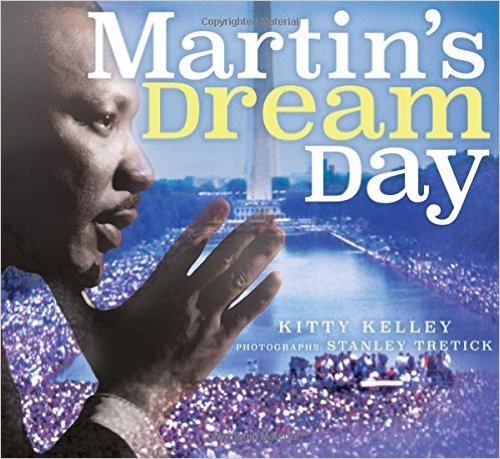
Martin’s Dream Day Hardcover by Kitty Kelley (Author), Stanley Tretick (Photographer)
While we have all heard the famous I Have A Dream speech seeing a collection of photographs from the days leading up to it and the march itself, really made me contemplate once again this immense moment in history. These pictures coupled with the text are sure to bring a deeper understanding of the significance of the speech.
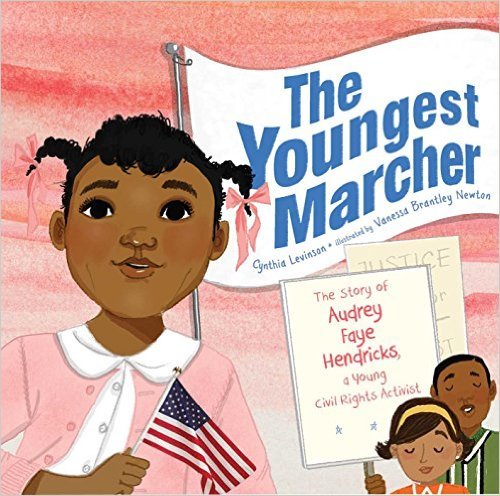
The Youngest Marcher: The Story of Audrey Faye Hendricks, a Young Civil Rights Activist
by Cynthia Levinson (Author), Vanessa Brantley Newton (Illustrator)
I had no idea that children were arrested during the Civil Rights Protests so I am thankful for this picture book that shares the story of Faye Hendricks, the youngest of the marchers to be arrested (and put into jail!). This is a story that is meant to inspire us to know we can make a difference and inspire it certainly does.
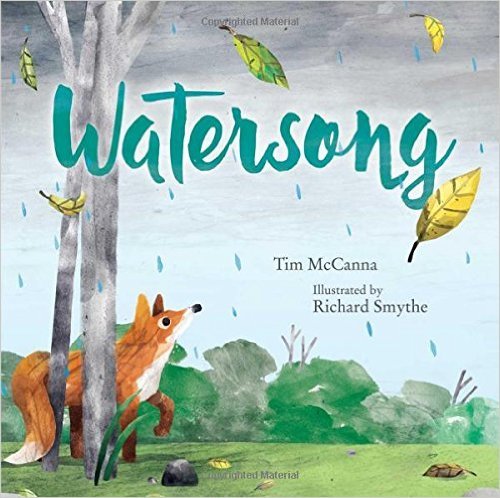
Watersong by Tim McCanna (Author), Richard Smythe (Illustrator)
If you ever have to teach onomatopoeia then this is the picture book for you. With gorgeous illustrations this book follows a fox as it tries to find shelter in a rainstorm. I would whisper Caldecott but alas the illustrator does not fit the criteria.
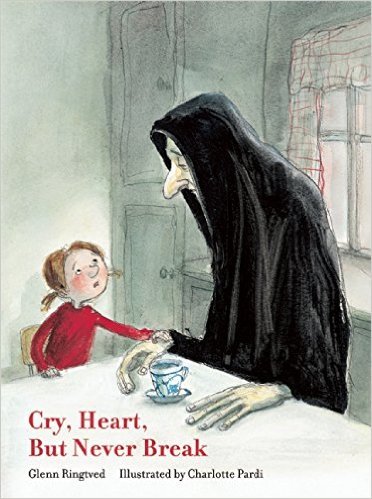
Cry, Heart, But Never Break by Glenn Ringtved (Author), Charlotte Pardi (Illustrator), Robert Moulthrop (Translator)
A picture book about death not meant to frighten but meant to help children understand the beauty of a life well lived, this Danish picture book, is truly one to add to your collection. Picture books can help us broach such difficult conversations in our classrooms and this one certainly does.
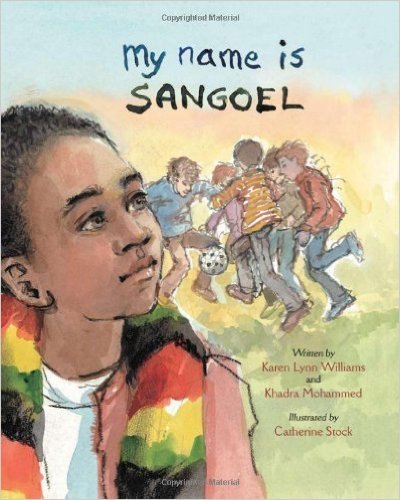
My Name Is Sangoel by Karen Williams (Author), Khadra Mohammed (Author), Catherine Stock (Illustrator)
What’s in a name? As educators we know the inherent power of pronouncing a child’s name correctly to make them feel accepted and included. This picture book from 2009 shares the story of Sangoel, a refugee from Sudan, and what happens when he comes to America. A must add as we try to break down walls and build understanding for others in our classrooms.
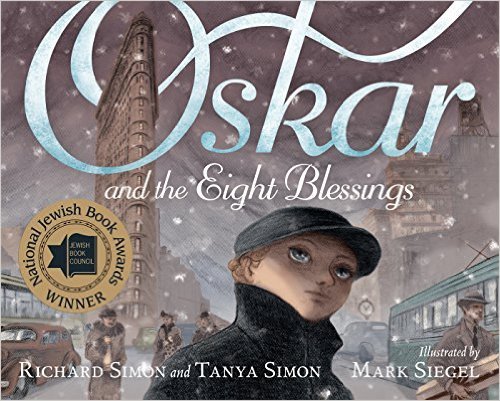
Oskar and the Eight Blessings by Tanya Simon (Author), Richard Simon (Author), Mark Siegel (Illustrator)
Sharing the story of Oskar, a young boy who has escaped the horror of the Jewish persecution in Germany and arrives in America with only a photograph and an address of an aunt he has never met. He must make his way through the streets of NYC, but rather than being afraid, he sees the blessings he meets along the way. Another must add as we discuss refugees, and not being afraid of others in our classrooms.
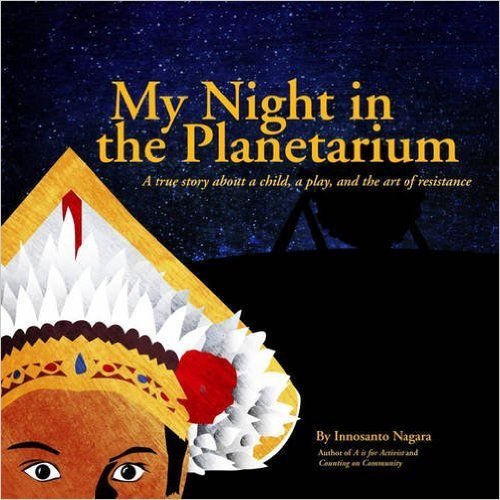
My Night in the Planetarium by Innosanto Nagara (Author)
Taken from his own life; this story of having to hide in a planetarium as the government looks for his activist father is one sure to get students talking. What happens when you speak up but the government does not want you to. Reminding us that even when it is scary, we should still stand up for what is right, this is another must add to your collection.

The Journey by Francesca Sanna (Illustrator)
One of the most powerful picture books to be published in 2016, The Journey is about a family as they flee from war and the decisions they have to make as they search for safety. Beautifully illustrated this picture book packs a punch.
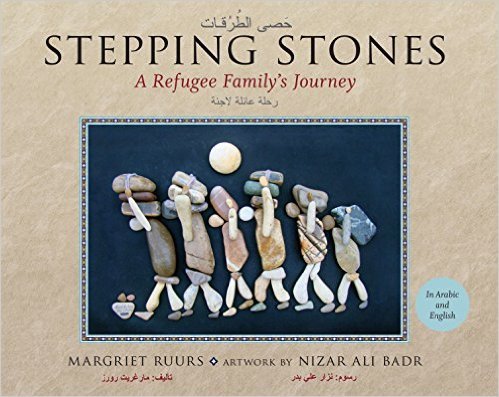
Stepping Stones: A Refugee Family’s Journey (Arabic and English Edition) by Margriet Ruurs (Author), Falah Raheem (Translator), Nizar Badr (Artist)
Also a picture book about a family that has to leave their country in search of safety, the artwork is all done by stone. With both English and Arabic text, I am so grateful for the vision of this picture book.
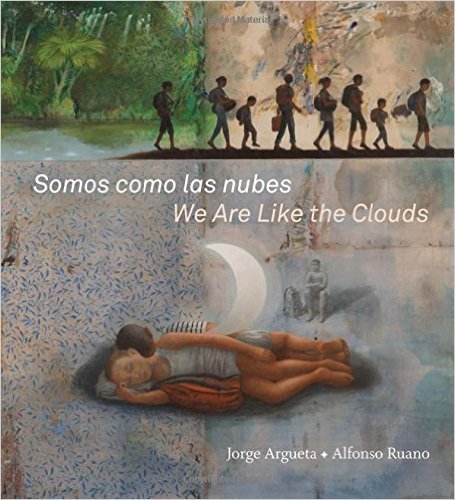
Somos como las nubes / We Are Like the Clouds by Jorge Argueta (Author), Alfonso Ruano (Illustrator)
Why would a child set out on foot toward America, knowing that there were thousands of miles filled with danger ahead of them? This picture book illustrates the journey that more than 100,000 children have taken as they try to reach safety in the United States. Told in poetry, this picture book helps us understand something that can seem inconceivable.
There you have it, a few new favorites, I hope this list is helpful. To see all of our other favorites through the year, please go here.
Filed under: being a teacher, Literacy, picture books, Reading


January 29, 2017
My Lesson Plan to Teach the #Muslimban
We were supposed to do an end of semester reflection tomorrow. To update our reader’s notebooks. To start our next exploration; the reading identity challenge. We were supposed to follow my planned out days moving us along the path I have laid out for the next four weeks. And then Friday happened and Trump signed another executive order, this one banning certain nationalities from entering the United States and stopping all Syrian Refugees from coming. And so as Smokey Daniels has said the world is handing us curriculum and I am taking it.
Tomorrow my students will not go through our Monday routine but will instead be will instead be asked to read, to watch news clips, crowdsourced here from both sides of the issue. They will be asked to pick what they want to read and what they want to watch. They will then be asked to formulate an opinion about what is happening and discuss it with each other. Their opinion is welcomed, no matter what it is. There is not an answer they are supposed to come to.
[image error]
Some have asked whether I am afraid of what others may think teaching this topic, but I am not. This is not my attempt to sway them in any way. In fact, it is not my job to tell them what to think, they have already proven themselves quite capable of thinking for themselves. It is not my job to indoctrinate nor turn them into a copy of me. It is my job to make them aware of what is happening in the world. To help them find credible information so they have something to base an opinion on. To offer them an opportunity to critically reflect and discuss their thoughts with others. That is what we do as teachers.
So tomorrow we will not just go about business as usual. I will not follow my lesson-plan, I hope you won’t either. Instead I will acknowledge that right now history is unfolding around us and the least we can do is to help students make sense of it all through in-class discussion. Through investigation. Through community and questioning. I have said it before; our students are the unwritten history of this nation, what will their pages say?
PS: Someone asked whether I would provide my students more background knowledge; they already have it due to the three week long project they did in regard to the refugee crisis in the fall. However, I may show them the first few minutes of this PBS video or continue to keep an eye on News-O-Matic and Newsela to see what they post.
Please add your resources to the Google Doc as well.
Filed under: being a teacher, global


January 28, 2017
Tonight, I am Afraid
I was born in Denmark; home of hygge, Lego, and Georg Jensen. Home of Queen Margrethe the Second, of Barbie Girl, and The Little Mermaid. I was born white. My mother passed to me her blonde hair, her blue eyes, and her fierce determination for standing up for myself and others.
I came to America as an immigrant by choice when I was eighteen. I did not have to flee a war. I was not running from terror or persecution. My family’s economic situation allowed us to come. I have considered myself a Danish-American for the eighteen years since, forgetting about my Green Card, about my not quite Americanism, not thinking about how I am immigrant.
I don’t speak with an accent. Most people are not even aware that I was not born here, nor raised. I think in English, I dream in English, I even teach English, even though it has never been my first language and never will be. And for the first time since coming to this country, I am afraid. As an immigrant, I am afraid.
Logically I shouldn’t be; after all, I am not seen as an enemy. I am not from one of the seven nations whose people have been banned from entering this country. I am not a Muslim. I am not someone whose people have been vilified for acts of a few. My own inherent privilege has shielded me from so much. I know this, and still…
As someone who holds a Green Card. As someone who is waiting to be sworn in as a citizen, as someone who does not have the full protection of the law, I realized that the pit in my stomach that I felt today was not just of outrage, but of fear. Because I am leaving for an international trip soon and for the first time ever, I have to consider whether I could be stopped from re-entering. Would I be told to return to Denmark, my country of citizenship because of my beliefs? Because of what I say? After all, I am publicly speaking out against the policies that are being implemented. I am not hiding my beliefs and I wonder if I should be? I cannot help but wonder…
As I turned to my America born husband today and told him of my fear, I felt so stupid. Was this another sign of my white privilege assuming that even a sliver of what is happening around us has anything to do with me? After all, the hatred, fear, and ignorance of those in power of this nation are not being directed toward people like me, it so rarely is, which that is a whole other post. I expected him to tell me I was over thinking it, that I was being silly, that I needed to take a step back and breathe. Instead he told me that he got it, that he knew logically that we probably have nothing to worry about but that doesn’t mean it couldn’t happen. We have already seen such extreme actions, what will be next? After all, first they came for the Socialists…
So tonight, as I try to find resources to somehow have my students discuss these past few days’ events, without sharing my own thoughts, I am trying to tell myself that I have nothing to fear. That my trip will be fine. That my re-entry will be nothing out of the ordinary. I cannot fathom how all of those families must feel around the world as they don’t get to dismiss their fears as irrational.
This is my truth tonight and I am not quite sure why I am sharing it. But there you go.
Filed under: being a teacher






